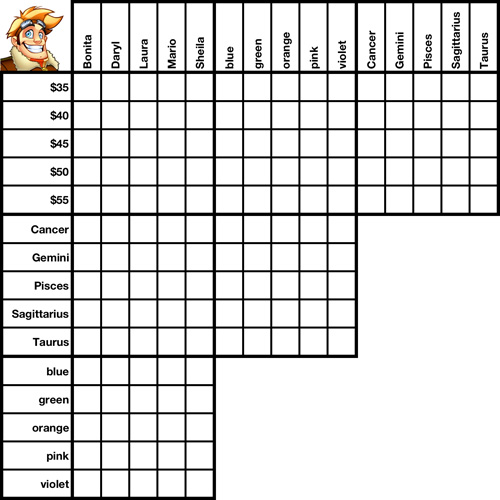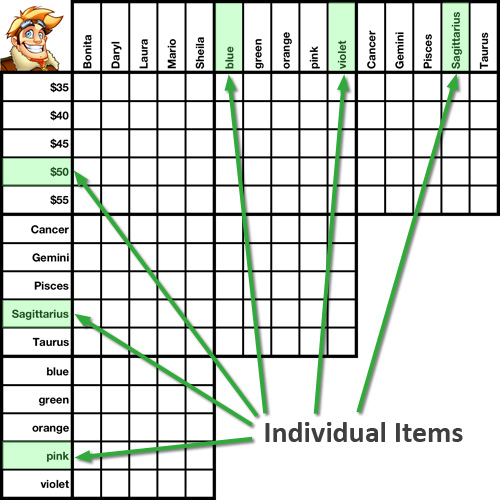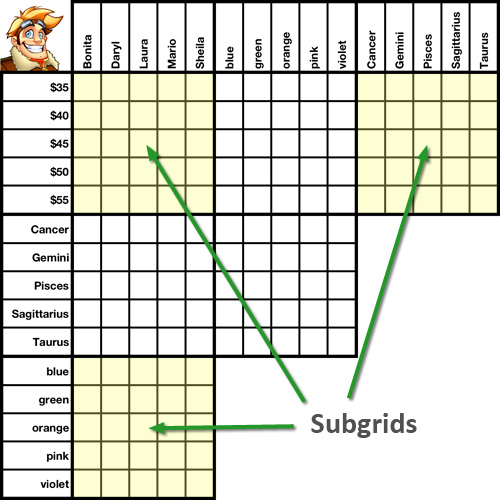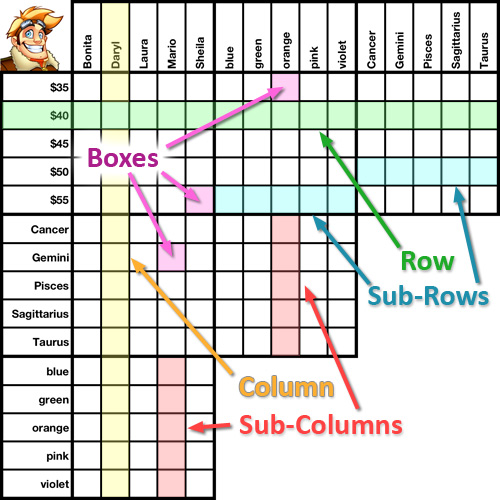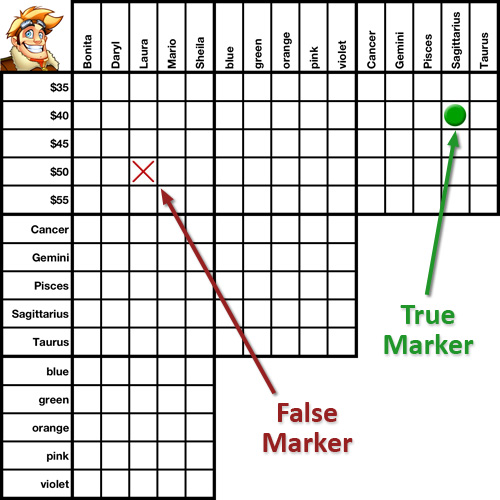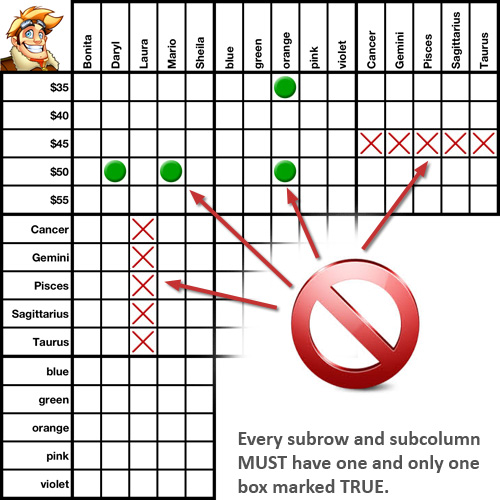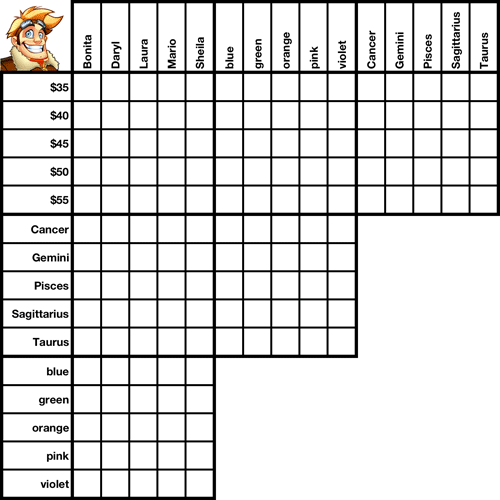A grid-based logic puzzle can seem daunting if you've never solved one before, but don't get discouraged - once you learn a few basic rules you'll be on your way to completing your first grid in no time.
Each logic puzzle is comprised of a list of clues and a grid like the one you see here on your left. The grid will display a certain number of categories (in this case, 4) and a certain number of items per category (in this case, 5). Every item is matched to one, and only one, other item in each category, and no two items in a category will ever be matched to the same item in another category.
Your goal is to figure out each item's matches, using just the clues given and pure logical deduction.


